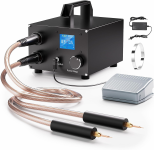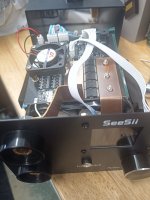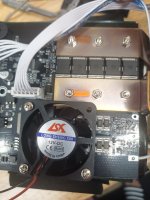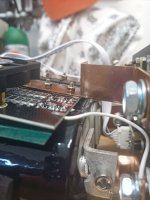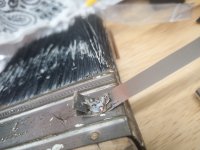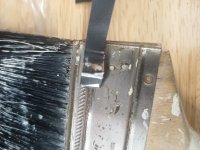I have been looking at getting a decent spot welding machine that does not have or need a battery but runs off AC power. I had a cheap $20 spot welder that hooked to a lawn mower battery and sparks and flames came out of it when trying to weld with it.
I am NOT looking to do modifications to make something work that is faulty by piss poor design of mosfets or other inferior electronics. I want a reliable spot welder that I can use to build 26650 cells as well as 18650. I want at least 0.2mm NOT just 0.15.
The one that caught my eye would be the US Solid model. Also Maximum welding energy of 119 J.
The other models are obviously made in China and not sure how many J. I am new to specifications on spot welders. I am knowlegable about ebike motors and controller as well as battery specs. Not spot welder specs.
I am starting this post to hope and get a better understanding of what is good and what is junk. I certainly do not want a unit that fails miserably after a few spot welds. I need one that is capable of building many large 26650 packs and at least a few years of service before failure and repair options.
I am hoping someone here is familiar with these NON portable AC spot welding machines. Therefore if it is not AC or has a battery inside or external please post on the other post about cheap $20 spot welders.
I am posting three units to start. My budget is < $250 and looking at a minimum of 0.2 mm nickel strip. I am not interested in 0.1.5 or less I would like to know how many amps 0.2 will handle vs 0.15mm.
I also would like to know what power level is recommended for 26650 LIFEPO4 cells. vs 18650. Is copper better or will nickel work. Looking at 100 amps for a possible 18S - 10 to 15P A123 - 26650 cells.
Thank you and hope to hear from someone.
Skyler.
I am NOT looking to do modifications to make something work that is faulty by piss poor design of mosfets or other inferior electronics. I want a reliable spot welder that I can use to build 26650 cells as well as 18650. I want at least 0.2mm NOT just 0.15.
The one that caught my eye would be the US Solid model. Also Maximum welding energy of 119 J.
The other models are obviously made in China and not sure how many J. I am new to specifications on spot welders. I am knowlegable about ebike motors and controller as well as battery specs. Not spot welder specs.
I am starting this post to hope and get a better understanding of what is good and what is junk. I certainly do not want a unit that fails miserably after a few spot welds. I need one that is capable of building many large 26650 packs and at least a few years of service before failure and repair options.
I am hoping someone here is familiar with these NON portable AC spot welding machines. Therefore if it is not AC or has a battery inside or external please post on the other post about cheap $20 spot welders.
I am posting three units to start. My budget is < $250 and looking at a minimum of 0.2 mm nickel strip. I am not interested in 0.1.5 or less I would like to know how many amps 0.2 will handle vs 0.15mm.
I also would like to know what power level is recommended for 26650 LIFEPO4 cells. vs 18650. Is copper better or will nickel work. Looking at 100 amps for a possible 18S - 10 to 15P A123 - 26650 cells.
Thank you and hope to hear from someone.
Skyler.









